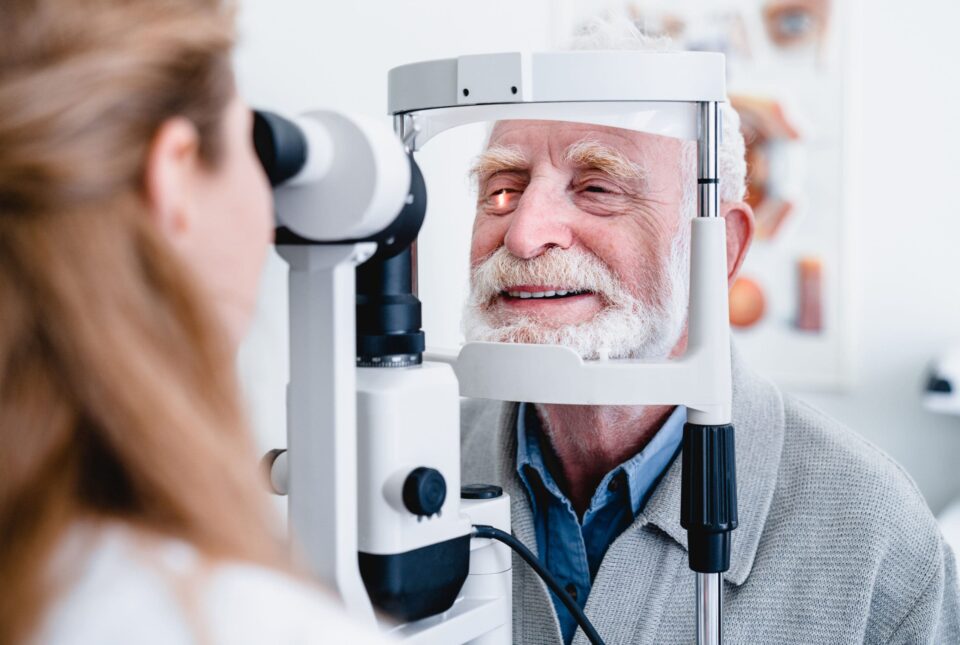
Lifestyle Lenses for Cataract Surgery & Refractive Lens Exchange (RLE)

Procedures
Lifestyle Lenses for Cataract Surgery & Refractive Lens Exchange (RLE)
Home / Procedures /
Enhanced Quality of Vision
Lifestyle lenses are a premium lens option that offers a more functional range of vision, and are designed to reduce the need for distance and reading glasses. NVISION offers the Acrysof® IQ Vivity® Extended Vision IOL, the PanOptix Trifocal IOL, the Light Adjustable IOL, among many more lifestyle IOLs.
Condition Treated
About Nearsightedness
Myopia, also known as nearsightedness, is a common type of refractive error where near objects appear clearly, but far objects appear blurry. This happens when the eyeball is too long or the cornea has too much curvature, causing light to focus in front of the retina instead of directly on it.
Farsightedness
The medical term for farsightedness is hyperopia. Farsightedness is a common refractive error in the eye that affects the ability to see close-up objects. In farsighted individuals, light entering the eye focuses behind the retina instead of directly on it. This can result from an eyeball that is too short or a cornea that has too little curvature.
About Astigmatism
Astigmatism causes your vision to be blurred at both near and far distances. It occurs when your cornea is shaped more like a football than a basketball.
Key features of astigmatism include:
- Blurred or Distorted Vision: Individuals with astigmatism often experience blurred or distorted vision at both near and far distances.
- Eye Strain and Discomfort: Astigmatism can lead to eye strain, headaches, and discomfort, especially after prolonged periods of reading or computer use.
- Difficulty with Night Vision: Some people with astigmatism may notice challenges with night vision, including glare and halos around lights.
- Combination with Other Refractive Errors: Astigmatism can occur on its own or in combination with nearsightedness or farsightedness.
Cataracts
Cataracts are a clouding of the lens of the eye that obstructs the passage of light. As a result, things will start to appear blurry, hazy, or less colorful. Cataracts are a common age-related condition that typically begins around age 40-45, but they can also be caused by injury, radiation exposure, or other factors. Cataracts progress over time and surgery is eventually required to restore clear vision.
During surgery, an intraocular lens is implanted to replace the affected natural lens of the eye. With lifestyle lenses, you can achieve spectacle independence after cataract surgery.
Common Questions About Lifestyle Lenses for Cataract Surgery & Refractive Lens Exchange (RLE)
What is the difference between a basic lens and lifestyle lens?
If an individual would like to reduce his or her dependence on glasses, a lifestyle lens would be the IOL of choice. The alternative is monofocal IOLs which typically require full time need for glasses for distance and near.
What is an intraocular lens?
When a cataract causes your eye’s lens to lose its clarity, the only option is to replace it with an intraocular lens (also known as an IOL). Intraocular lenses are artificial lenses that are implanted to replace your natural lens when it is removed during surgery. The lens is permanent, needs no maintenance, and can remain in your eye for your entire life.
The best IOL for you depends on your lifestyle and your visual needs.
Take the Next Step to Clear Vision Today
For over 25 years, NVISION has been the trusted choice in custom vision correction. With 135+ locations nationwide and over 2.5 million procedures performed, our board-certified surgeons combine expertise with the latest technology to deliver exceptional care.
Your journey to better vision starts here.

Book Your Consultation
You're one step closer to life without glasses or contacts. Just answer a few quick questions about your eye exam, and we'll lock in your appointment.
Have a question? Give our experts a call!
877-455-9942
